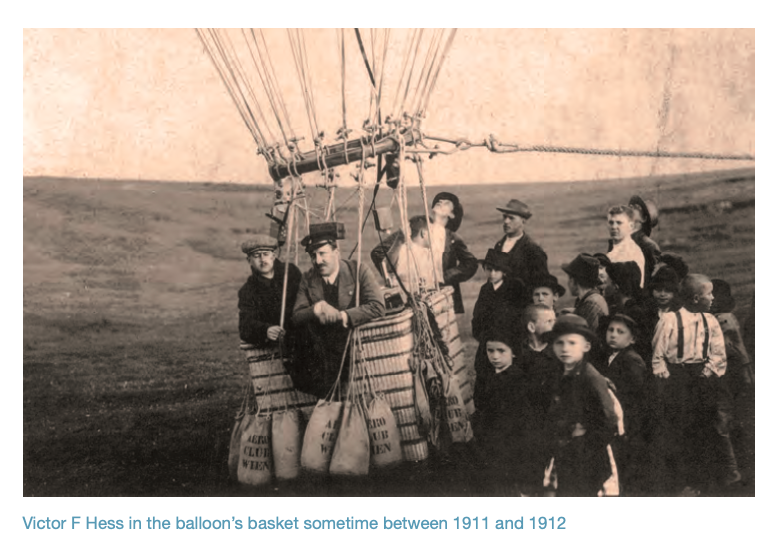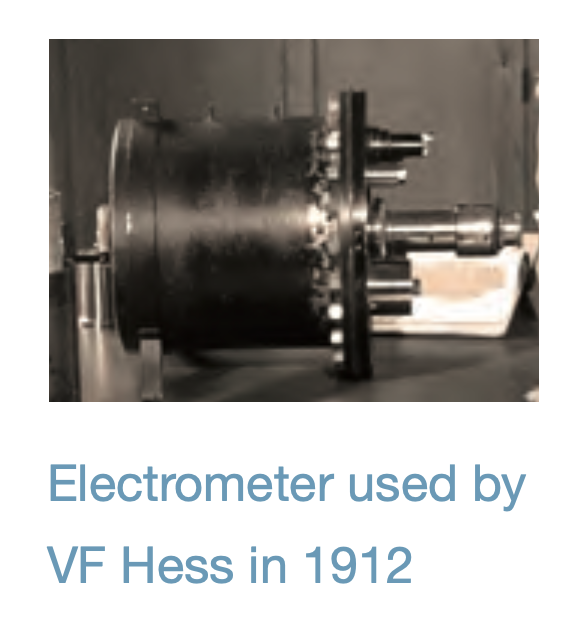The pioneers
In this tab you will learn about:
- The role of electrometer in the discovery of cosmic rays;
- The usage of the hydrogen balloon as a “lab” to carry out measurements.
Have a good read!
In the early XX century, the Austrian physicist Victor Hess did a series of rises in a hydrogen balloon to measure atmospheric radiations (Figure 3). He was looking for the source of ionizing radiation registered in an electrometer (device of Figure 4) because, at the time, it was assumed that the radiation came from the natural radioactivity of Earth’s stones. Therefore, it was believed that the intensity of the radiation measurement should decrease with increasing altitude. In 1909, German scientist Theodor Wulf measured the ionization rate near the top of the Eiffel Tower using a portable electrometer in an effort to corroborate this theory. At 300 m above the ground, Wulf observed less radiation. However, the radiation level did not disappear completely, as expected for a purely terrestrial origin.
Victor Hess went even further, carrying electrometers in a balloon. In 1911, his balloon reached an altitude of about 1100 meters, but Hess found "no essential change" in the amount of radiation compared to ground level. Then, on August 7, 1912, on the last of seven flights that year, Hess made an ascent to 5300 meters. There, he discovered that the ionization rate was about three times that of sea level and concluded that the radiation penetrating the atmosphere was coming from above. On a previous flight, since he had found no noticeable dip during a partial solar eclipse, he was able to rule out the Sun as the source. In fact, Hess had discovered a natural source of high-energy particles: cosmic rays. For the discovery of cosmic radiation, Viktor Hess received the Nobel Prize in 1936.

Figure 3: Victor Hess in a balloon used for atmospheric flights between 1911-1912.

Figure 4: Electrometer used by Victor Hess to measure radiation in the atmosphere in 1912.